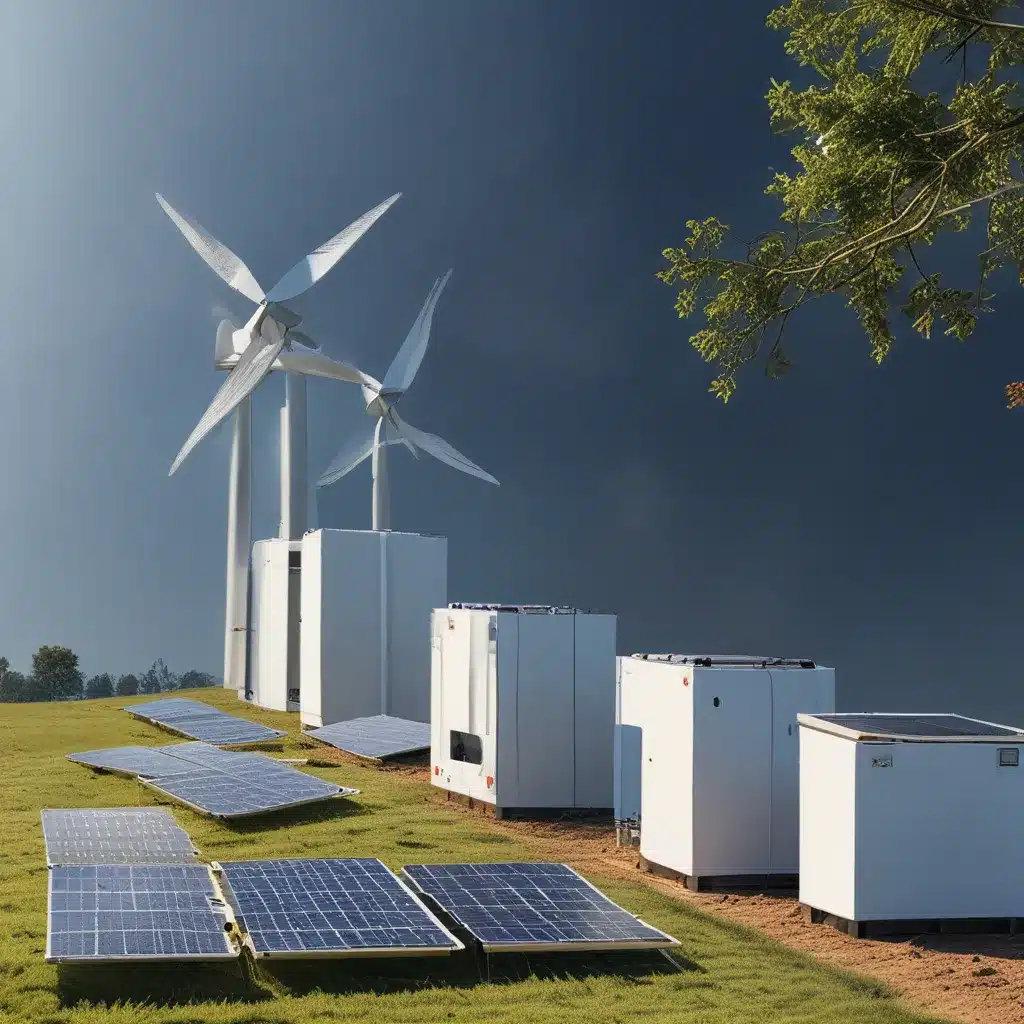
The Battery Breakthrough Powering Our Clean Energy Future
I’ll never forget the day I first learned about the potential of energy storage to revolutionize our clean energy future. It was a few years ago, and I had the chance to tour a cutting-edge battery storage facility with the team from Solar A Systems Inc. As we walked through the rows of gleaming lithium-ion batteries, I was struck by the sheer scale and sophistication of these systems.
These weren’t your average AA batteries – no, these were the powerhouses that could store massive amounts of electricity generated from solar and wind, and then release it onto the grid precisely when it was needed most. It was like a secret superpower for renewable energy, smoothing out the peaks and valleys to ensure a constant, reliable supply of clean power.
Batteries: The Unsung Heroes of the Green Energy Transition
Battery storage technologies are essential to speeding up the replacement of fossil fuels with renewable energy. As New York’s energy storage roadmap makes clear, these systems will play an increasingly pivotal role in bridging the gap between green energy supplies and responsive electricity demands.
Think about it – what good is all that solar and wind power if we can’t use it when we need it most? That’s where battery storage comes in. By capturing excess energy and keeping it on tap, these systems allow us to harness the full potential of our renewable resources, even when the sun isn’t shining or the wind isn’t blowing.
It’s a bit like having a well-stocked pantry – sure, you might not be able to cook a full meal right away, but you’ve got all the ingredients ready to go whenever hunger strikes. And just like that pantry, battery storage systems come in all shapes and sizes, from the massive grid-scale facilities to the compact home battery packs.
The Lithium-Ion Revolution
These days, the lithium-ion batteries that power our smartphones and electric cars are leading the charge (pun intended) when it comes to large-scale energy storage. And it’s easy to see why – these batteries are incredibly efficient, long-lasting, and continuously improving in terms of cost and performance.
But the story of lithium-ion batteries is a fascinating one, dating back to the 1970s when a British scientist first had the brilliant idea. It wasn’t until the early 90s, though, that Sony commercialized the technology, and the rest, as they say, is history.
Now, these batteries are powering everything from industrial-scale solar farms to your neighbor’s rooftop PV system. And as the technology continues to evolve, we’re seeing all sorts of exciting new applications, from grid-scale energy storage projects in New York to cutting-edge experiments with compressed air, gravity, and even hydrogen-based storage systems.
The Balancing Act of Grid Integration
Of course, integrating all this new energy storage capacity into our existing electrical grids isn’t exactly a walk in the park. As Prescott Hartshorne from National Grid points out, managing the peaks and troughs of supply and demand becomes even more challenging when you’re aiming for net-zero carbon emissions.
That’s where the true magic of battery storage really shines. By strategically deploying these systems, grid operators can smooth out the fluctuations in renewable energy generation, ensuring a steady, reliable flow of electricity even on the cloudiest, stillest days.
It’s a delicate dance, to be sure, but one that’s essential if we’re going to make the transition to a 100% renewable-powered future. And with the right mix of policy support, technological innovation, and good old-fashioned human ingenuity, I’m confident we can get there.
The Benefits of Solar-Plus-Storage
One of the most exciting developments in the energy storage space is the growing trend of pairing solar and storage systems together. As the Department of Energy explains, this “solar-plus-storage” approach offers a number of key benefits:
- Increased Reliability: By storing excess solar energy, these systems can ensure a steady supply of power even when the sun isn’t shining.
- Enhanced Resilience: During outages or grid disruptions, solar-plus-storage can keep critical systems and facilities running.
- Improved Efficiency: Storage helps match solar energy generation to peak demand, reducing the need for costly peaking power plants.
- Reduced Emissions: By displacing fossil fuel-based generation, solar-plus-storage can make a significant dent in our carbon footprint.
It’s a win-win-win-win scenario, and it’s no wonder that more and more homeowners, businesses, and utilities are embracing this powerful combination.
The Road Ahead: Unlocking the Full Potential of Energy Storage
As exciting as the progress in energy storage has been, I can’t help but feel like we’re just scratching the surface of what’s possible. With continued investments, policy support, and technological breakthroughs, the potential of these systems to transform our energy landscape is truly limitless.
Just imagine a future where our homes, businesses, and communities are powered by a seamless blend of renewable energy and state-of-the-art storage, ensuring a reliable, affordable, and sustainable supply of electricity for all. It’s a future that’s within our grasp, but it’s going to take some serious work to get there.
Fortunately, we’ve got a growing army of innovators, policymakers, and everyday citizens who are committed to making this vision a reality. From the team at Solar A Systems Inc to the energy storage gurus at the Department of Energy and NYSERDA, there’s no shortage of passionate people working to unlock the full potential of these game-changing technologies.
So, what are we waiting for? Let’s roll up our sleeves, charge up our batteries, and get to work building the clean energy future we all deserve. The possibilities are endless, and the time to act is now.


